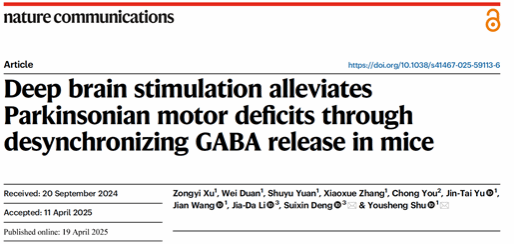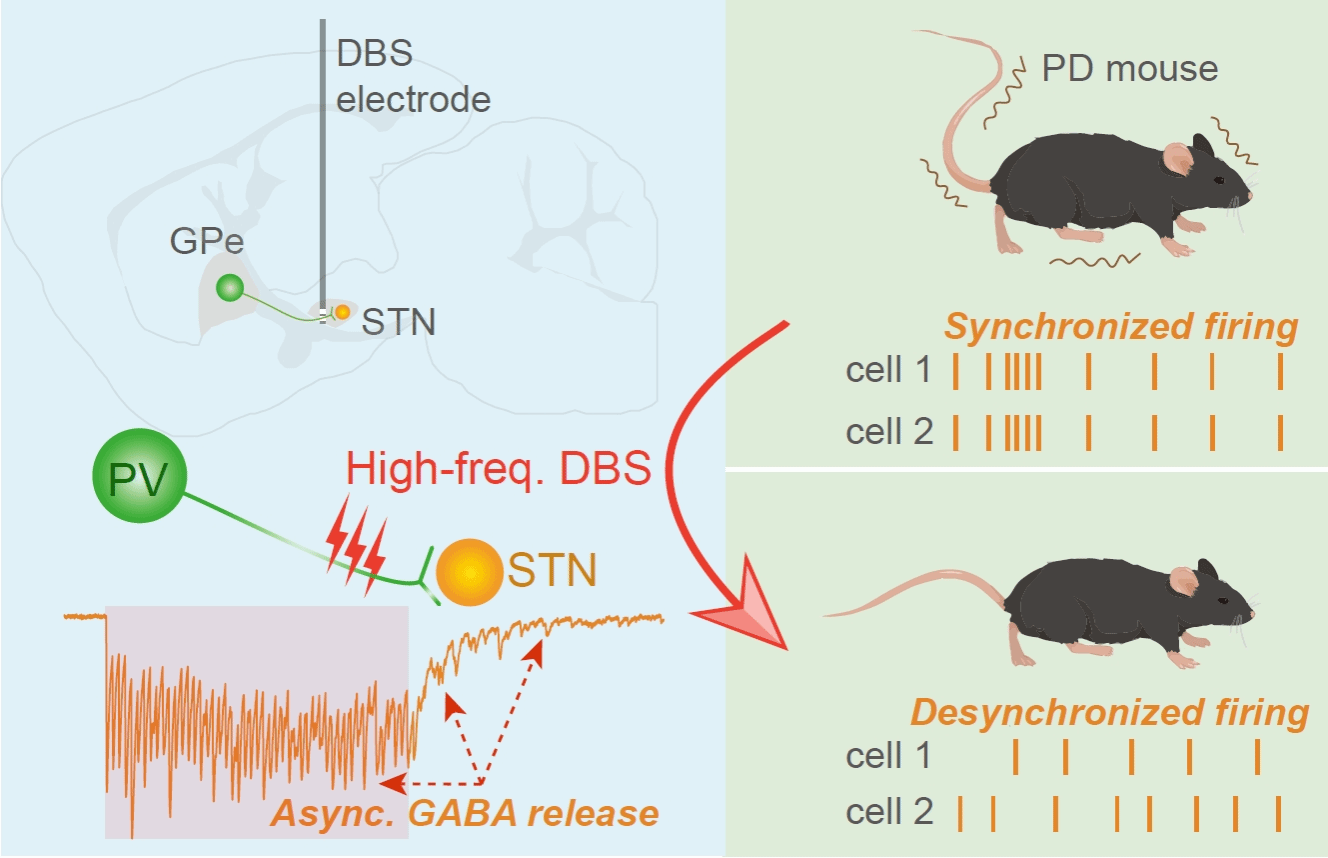High-frequency deep brain stimulation (DBS) at subthalamic nucleus (STN) is an effective therapy for Parkinson’s disease (PD), but the underlying mechanisms remain unclear. Here we find an important role of asynchronous release (AR) of GABA induced by high-frequency stimulation (HFS) in alleviating motor functions of dopamine-depleted male mice. Electrophysiological recordings reveal that 130-Hz HFS causes an initial inhibition followed by desynchronization of STN neurons, largely attributable to presynaptic GABA release. Low-frequency stimulation at 20 Hz, however, produces much weaker AR and negligible effects on neuronal firing. Further optogenetic and cell-ablation experiments demonstrate that activation of parvalbumin axons, but not non-parvalbumin axons, from external globus pallidus (GPe) is both necessary and sufficient for DBS effects. Reducing AR diminishes the high-frequency DBS effect, while increasing AR allows lowfrequency DBS to achieve a therapeutic benefit. Therefore, asynchronous GABA release from GPe PV neurons may contribute significantly to the therapeutic effects of high-frequency DBS.


paper link: https://pubmed.ncbi.nlm.nih.gov/40253429/